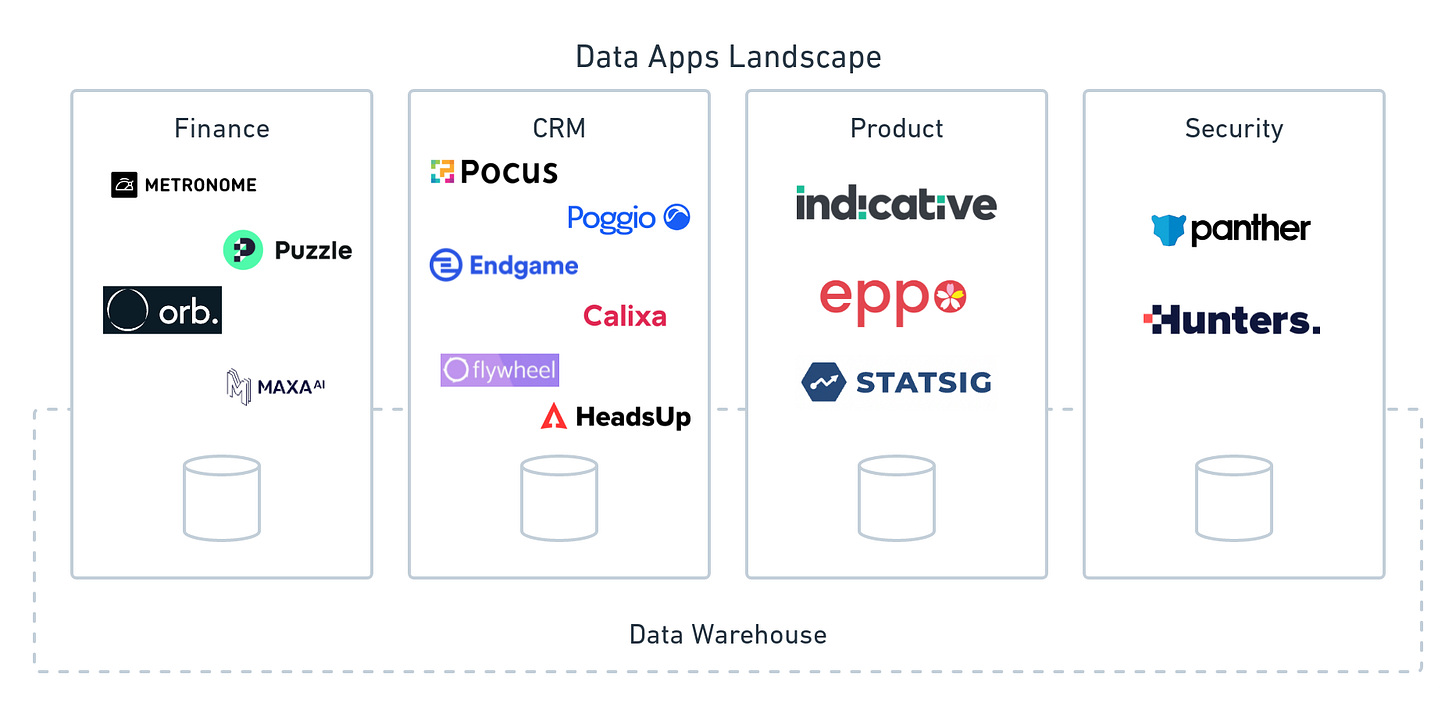Architectural changes lead to huge opportunities for startups. Salesforce took advantage of the move to the cloud to steal market share from SAP. Figma rode the cloud wave to compete with Adobe. Applications built directly on the data warehouse may be the next wave.
Today, each SaaS app has their own database and data is moved between SaaS apps with APIs. In addition, many companies use Reverse ETL tools to get transformed data from their data warehouses into SaaS apps.
However, there are more and more SaaS apps that rely heavily on the data warehouse to do their job. For example, you may want to target users in your CRM based on how recently they signed up or you might want to bill your customers based on their product usage. In some cases, it makes sense for apps to read and write to their customer’s data warehouse instead of their own database.
With the rise of the data warehouse this new architecture is now possible and we are seeing a number of startups building directly on top of the data warehouse. There are several advantages to this architecture: 1 2
Lower costs: Startups don’t have to store all their customers’ data. This leads to lower costs and ultimately better gross margins.
Easier onboarding: Startups can connect to their customers’ data warehouse to onboard them instead of pulling data in a bespoke way for each customer. In addition, there are fewer security considerations because customer data stays in their data warehouse.
Faster distribution: Startups can draft off data warehouse adoption and GTM. We’ve seen this with Fivetran and others.
It is an oversimplification to say the data warehouse is completely the new backend, but I’m no longer an engineer which means I can oversimplify 😅. In practice, companies will use something like Postgres for serving some low latency transactional queries <500ms and storing metadata like accounts and permissions. However, these apps are increasingly reading and writing customer data to the data warehouse as it becomes the source of truth.
The main verticals we have seen startups in are, not surprisingly, verticals that need customer data to be effective. We have seen companies like Pocus and Poggio reinventing CRM on top of the data warehouse, Puzzle building an ERP on top of the data warehouse, and Eppo engineering a next-gen experimentation platform. Here are some of the startups so far, but I’m sure there are tons more to come.
The use cases in the future may be even more interesting. You could join data from your ERP with your CRM and product analytics and say “find every company paying us over $50k who has used product in the last month and we haven’t invoiced yet” without doing any setup to make this query possible.
When surfing, waves often look really small when they are far away, then huge when they are about to break on top of you. This wave looks small and in the distance for now…but could be a massive wave for new SaaS companies to ride.
In future posts we will dive into how this architecture will affect data warehouse costs, application performance, security, and data sharing. If you’re building something on top of the data warehouse or are interested in this space, we would love to hear from you. You can reach me at pchase@redpoint.com.
Special thanks to Tomasz Tunguz, Stefan Williams, and Matt Hill for their thoughts and feedback!
https://www.snowflake.com/blog/a-window-of-opportunity-to-the-data-cloud/
https://tomtunguz.com/data-feedback-loop/





Snowflake is a platform more than a product. love the write up!
"When surfing, waves often look really small when they are far away, then huge when they are about to break on top of you. This wave looks small and in the distance for now…but could be a massive wave for new SaaS companies to ride."
NAILED IT!!